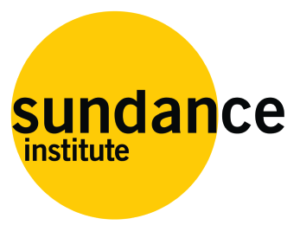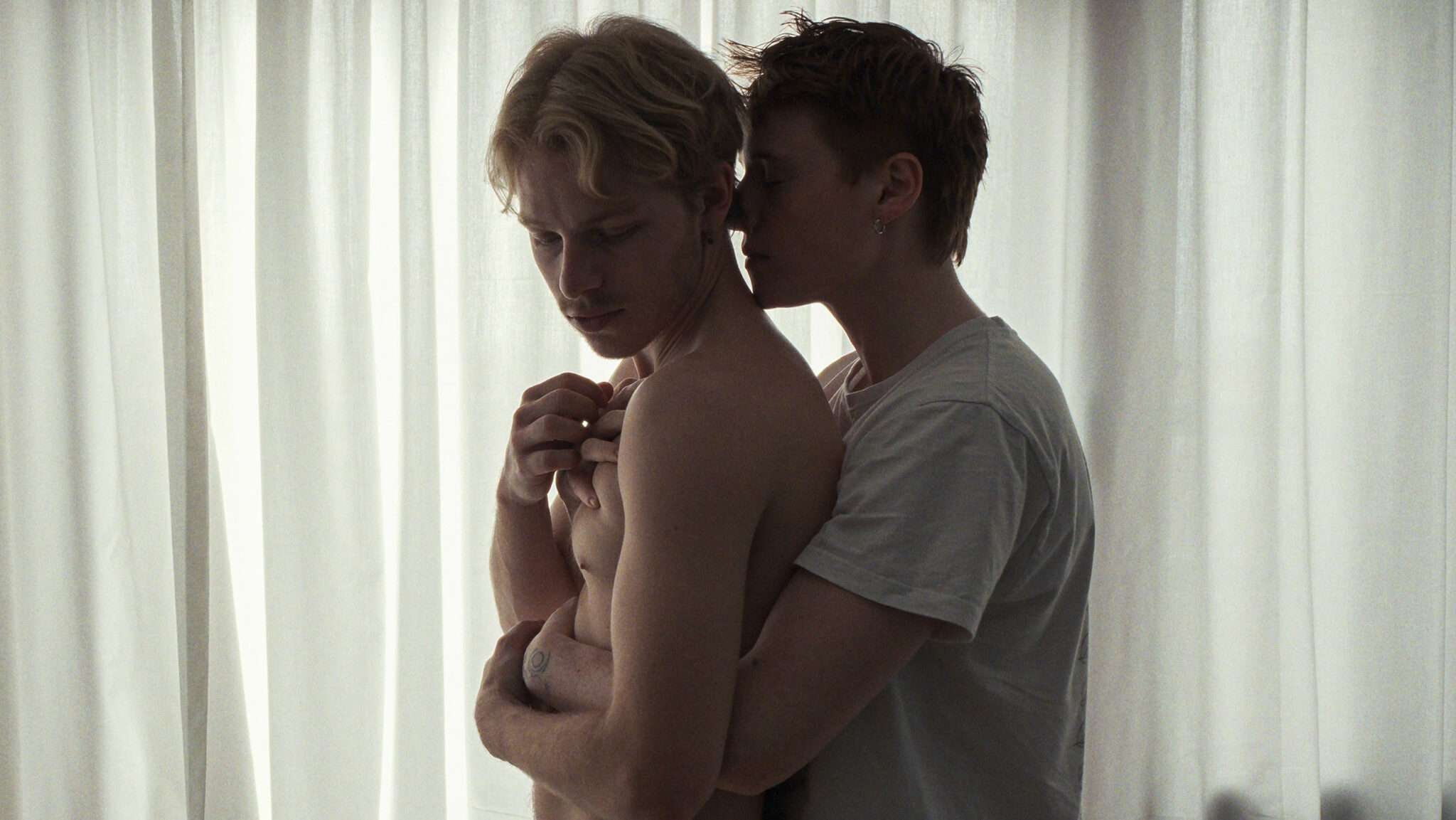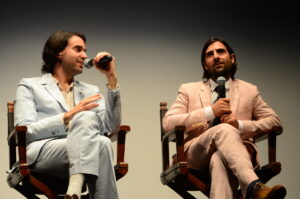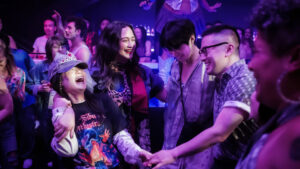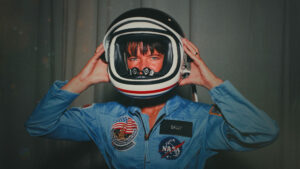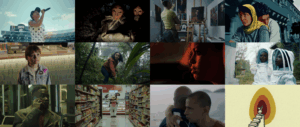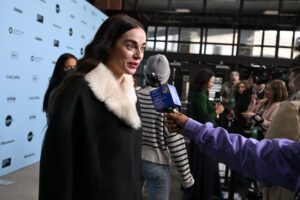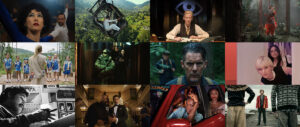By Jessica Herndon
One of the most exciting things about the Sundance Film Festival is having a front-row seat for the bright future of independent filmmaking. While we can learn a lot about the filmmakers from the 2025 Sundance Film Festival through the art that these storytellers share with us, there’s always more we can learn about them as people. We decided to get to the bottom of those artistic wells with our ongoing series: Give Me the Backstory!
For Dane director Mathias Broe, making his debut feature, romantic drama Sauna, was bittersweet. Bringing to life the first Danish film to cast a transgender person in a leading role “felt both sad and exciting,” says Broe. “Humbling that we will be the first, but sad that it hasn’t happened before. During the production we were conscious about the fact that we were making Danish film history. Hopefully Sauna will contribute to a diverse and important legacy of queer cinema, allowing us to be telling our own stories, but experienced on equal terms.”
In the film, transgender actor Nina Rask embodies William, a trans man who embarks on a feverish romance with Johan (Magnus Juhl Andersen), a queer man who works in a bathhouse and keeps a pattern of casual sex, after the two meet online. As their relationship heats up, so do their conflicts, particularly when it comes to queer identity, the nuances of queer relationships, and class.
Based on the book Sauna by writer and activist Mads Ananda Lodahl, Broe’s film, which he co-wrote with William Lippert and which premiered in the World Cinematic Dramatic Competition at the 2025 Sundance Film Festival, was “inspired by the need to tell important and authentic stories from the inside of the queer community,” says Broe.
Below, Broe chats about the importance of telling a relatable queer love story, crafting authentic intimate scenes, and making a historical mark in cinema.

Will you describe who you want this film to reach?
We want primarily to reach and move our core audience of queer cinemagoers. But, from the beginning, it has been our ambition to reach a bigger local and international audience to widen the language and build bridges towards our own life experiences as queer people.
Tell us an anecdote about casting or working with your actors.
There were a lot of intimacy scenes in the film, so during pre-production we had a close collaboration with intimacy coordinator Anne Sofie Steen Sverdrup from the local porn production company Bedside Productions. Together with actors Nina Rask and Magnus Juhl Andersen we developed a trustful space and created all of the choreography to make sure that everything went smoothly before shooting the film. Together with photographer Nicolai Lok, we even shot a series of porn for Bedtime magazine before shooting the film to make sure that we would be working in the best way possible with the intimacy in the film.
What was your favorite part of making Sauna?
The favorite part has been the possibility for us to engage people from our local community in the film. There has been such a big support in all of the processes. That support has made it possible for us to make an ambitious film. Also seeing how we’ve been able to work with people from different generations, telling both the story of a younger and older part of the queer community has been a rare and healing process.
What was a big challenge you faced while making Sauna?
In the beginning of creating the script for Sauna, me and my scriptwriter William Lippert were very afraid of doing something wrong. We wanted to tell a politically perfect story. But after talking to professors of gender studies, trans consultants, and looking into queer therapeutic methods, we decided to let go and lean into trusting that we were telling a story about a universal human experience of love. It was a big relief realizing that queer people also need true, raw, and authentic portraits. We are also complex even though we don’t get to experience it that often on screen.
Another big challenge was to find the perfect William. We wanted him to be played by a trans person, but unfortunately there’s not a lot of actors who are trans in Denmark. There is still a big gap in the industry in terms of representation and that’s why it is so important that we get to make these stories. Sauna is the first Danish film with a trans person as a lead character and a lot of the scenes are explicit. After a big casting search with the help from caster Djamila Hansen, we decided to work with actor and comedian Nina Rask, who brings so much charm and edginess to the character. Together with Magnus Juhl Andersen, there is so much chemistry in the scenes and it was humbling to remind each other on set that we were making Danish film history.
Why does this story need to be told now?
Cinema is one of the strongest mediums we have for change and this story was supposed to be told many years ago. So, it feels urgent to tell it now. The queer community is constantly facing multiple and continuous political attacks from the right, so it makes it important for us to tell a relatable story about love, but also making sure that we show the specific facets of the queer experience to hopefully contribute with a greater understanding.
Why and how did you get into filmmaking?
I grew up with an alcoholic father. Realizing that I could work my way through life with a camera was such a healing experience. One of my first works was a portrait of him and when other young people saw the film, it made me understand that I was not alone growing up in abuse. Since then, I’ve tried to strive for creating personal storytelling and working with cinema in a therapeutic and intuitive way.
Why is filmmaking important to you? Why is it important to the world?
As a director, I’m interested in building bridges between people and in our society, but it’s even more important for me to create something that makes the audience feel seen and transformed. I want people to walk out of the cinema with a new sense of self and understanding of others.
If you weren’t a filmmaker, what would you be doing?
I used to be a professional dancer, so I would probably be a dancer. I also teach a lot of actors and young filmmakers at various schools in Denmark. It’s hard work, but usually it feels extremely fulfilling when I’ve managed to help an upcoming artist get closer to themselves or their own artistic expression.
What is something that all filmmakers should keep in mind in order to become better cinematic storytellers?
They should never feel like they have the answer. Cinema should always be about questioning and exploration.
Who are your creative heroes?
Rainer Werner Fassbinder, Lars von Trier, Ryan McGinley, Damien Jalet, Faun Vium (my partner).
What three things do you always have in your fridge?
Colorful juices, coffee, and Russian cocaine — it’s a shot of bison grass vodka, lime, sugar, and coffee.
What was the last thing you saw that you wish you made?
The Substance by Coralie Fargeat.
One thing people don’t know about me is _____.
I was obsessed with Baz Luhrmann’s version of Romeo + Juliet when I was 17, so I got a tattoo on my left ribs inspired by that film. It has a spelling mistake in it and when I found out I was so embarrassed. Now I find it extremely charming, knowing that everything was so impulsive at the time. I try to embrace my old romantic self and the mistakes I make.
Which of your personal characteristics contributes most to your success as a storyteller?
Growing up as a queer person feeling alienated in a small town, I always felt like something bigger awaited me in the future. The dream for that future simply stuck with me and made my level of ambition a way to create a better world for myself. On top of that, my grandfather and my mom are both very stubborn people, so I guess I also inherited something from them.
Tell us about your history with Sundance Institute. When was the first time you engaged with us? Why did you want your film to premiere with us?
The first time I remember really engaging with the Sundance Institute was when I [watched] Little Miss Sunshine from 2006. I was 14 at the time and completely charmed. Now looking into films like Poison by Todd Haynes, thinking back on Beasts of the Southern Wild by Benh Zeitlin or Dronningen by May el-Thouky, a local heroine, I feel so extremely proud of premiering at Sundance.
Who was the first person you told when you learned you got into the Sundance Film Festival?
My partner, Faun, and my best friend, Alma, were in the room when I got the invitation and opened my email by accident on a late Sunday night. We started crying and I couldn’t sleep the entire night. I think I want to print the official invitation and hang it on my wall.
What’s your favorite film that has come from the Sundance Institute or Festival?
This is an impossible question, but if I should pick a Danish masterpiece it would probably be Dogville by Lars von Trier.
